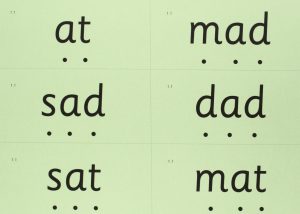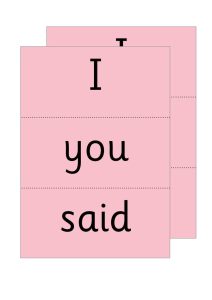Phonics At dunholme st chad's
'Open Hearts and Open Minds'
Next Parent Information Virtual Session: Tuesday 9th May, 5pm

Read, Write, Inc. Phonics Policy - Please click here to view our policy.
Read Write Inc Phonics supports children's knowledge, skills and understanding of phonics.
For more information regarding Read Write Inc., click on the link below.
https://home.oxfordowl.co.uk/reading/reading-schemes-oxford-levels/read-write-inc-phonics-guide/
Parent Booklet 1 - provides guidance for EYFS children learning Set 1 sounds.
Parent Booklet 2 - provides guidance for children learning Set 2-3 sounds.
Handwriting Phrases - help your children with their letter formation by using the phrases taught in school.
Set 1, 2 and 3 Sounds - This handout has all the Set 1, 2 and 3 sounds.
Set 1 Sounds with Pictures - learn the sounds and the phrases that go with them!
Set 2 Sounds with Pictures - learn the sounds and the phrases that go with them!
Set 3 Sounds with Pictures - learn the sounds and the phrases that go with them!
Additional Sounds - learn the additional sounds.
What is Read Write Inc?
When teaching your child to read, we never use letter names at this early stage. Many schools use different phonics schemes to teach children to read; however, at Prince Rock, we believe Read Write Inc Phonics is the best scheme to support your child with their early reading. Your child will be assessed and grouped according to their phonics ability, working in small groups with a teacher or teaching assistant.
Speed Sounds
When teaching your child phonics, we will use the term 'speed sounds', these are individual sounds which your child will learn how to read quickly and effortlessly as they progress through Reception, Year 1 and Year 2. Your child will be regularly assessed to ensure they are reaching their full potential and will receive additional booster sessions if appropriate.
Phoneme
Your child will learn a new sound every day accompanied by a handwriting rhyme which helps them to remember how to form the letter shape when writing it. A phoneme is the smallest unit of sound in speech, this may be one letter, or a group of two or three letters which make one sound. For example, if your child was learning the phoneme (sound) ‘a’, they would also learn the rhyme ’round the apple and down the leaf’ when they start to write their letter. In set 1, your child will learn 44 phonemes.
Blending
As your child learns each sound (phoneme), they are taught how to blend the sounds together to make two and three letters words (CVC words - consonant, vowel, consonant - such as the word 'dog'). Your child will learn how to read real and nonsense words.
Green Words
Alongside this, your child will start to read 'green' words. 'Green' words are words which can be sounded out and blended like ‘dog’, ‘cat’.

Red Words
Having gained confidence sounding out green words, your child will be taught about ‘red' words.

Red Ditties
As your child gains confidence reading individual words, they will move onto reading sentences, then onto 'ditties'. The Red Ditty books provide a bridge between your child reading simple words/sentences and reading short stories. Watch the video below on how to support your child with their reading book.
Parent Video: Red Ditty Books:
Digraphs and Trigraphs
When the children have learnt the single sounds they begin to move on to two and three letter sounds these are called digraphs (2 letters making 1 sound like ‘ea’ in the word tea) and trigraphs (3 letters making 1 sound like ‘igh’ in the word light). Set 1 sounds include the digraphs 'ch', 'sh', 'th', 'ng, 'nk, and 'qu'. They know these as 'special friends'.
Parent Video: Reading the digraphs with your child
Fred Talk
At school we use a puppet called Fred who can only speak in sounds, not whole words. We call this Fred Talk. For example, Fred would say d-o-g, we would say dog. Your child is taught to hear sounds and blend them together in sequence to make a word.

Fred Fingers
Fred Fingers are used for spelling. Your child is taught to sound out the word they are spelling and put up the correct number of fingers for the sounds they can hear in that word. For example: m-ee-t = 3 sounds = 3 fingers. When your child starts to write words, they will be taught to use their 'Fred Fingers':

Sound Buttons and Dashes
Sound buttons are circles or spots that can be written underneath a sound to support reading. Your child will be taught to say the sound aloud as they touch the sound button. If reading a diagraph (two letters making one sound) or trigraph (three letters making one sound), your child will know that this sound is represented by a dash underneath the letters which make the sound. See above in the word play, 'ay' is a diagraph, so has the dash underneath.
Fred in your head
Your child's teacher will hold up a green word (close to their chest), giving your child time to mime the sounds, and will then push the word forward as a signal for your child to say the whole word (as opposed to blending individual sounds). This will be repeated over a period of time, until your child can say the word straight away. Your child will start off initially mouthing the sounds silently and then saying the whole word to saying the whole word straight away.
Phonics Screening Check
In Year 1, your child will have a Government Led, phonics screening check, this is normally held around June. The purpose of the check is to confirm whether individual children have learnt decoding and blending skills to meet an age-appropriate standard. The phonics screening contains 40 words and your child will work one-to-one with the teacher, reading words out aloud. There will be a combination of real words and nonsense words.
There is not a set time limit to complete the screening in but it usually takes around 5-10 minutes. If your child's teacher thinks it would be appropriate, your child can have a break or stop if they are struggling. If your child does not meet the pass mark they will have to retake the screening test in Year 2. (You will be informed on their end of year school report on this.)
By the end of Year 1, it is expected that children are able to recognise the grapheme-phoneme correspondences, segment and blend them confidently in words. For the past few years the expected pass mark has been 32 out of 40.
Parent Video: The Phonics Screening Check
What books will my child bring home?
The children will be bringing two types of books home: a book which corresponds to their phonics reading level and has been read at least three times before in school, and a 'Sharing Book', which is to be enjoyed and shared with family members at home. The child is not expected to read this book, but enjoy it with an adult to develop a love of reading.
Listening to your child reading is important. However, your child hearing you read or tell a story is just as important. This will support them to develop new vocabulary, learn how to use expression in their voice. Encourage your child to decode the sounds e.g. segmenting or drawing on sound buttons. When you are out and about read signs around you. Practise speed reading the sounds your child has been learning in school.
My child won’t read, no matter what I do. How can I help?
- Read to your child as much as possible
- Talk to your child’s class teacher - working together will help
USEFUL WEBSITES:
Oxford Owl Press http://www.oxfordowl.co.uk
Read Write Inc http://www.oxfordowl.co.uk/reading-owl/at-school
Ruth Miskin Parents’ Page:
http://www.ruthmiskin.com/en/parents/
Ruth Miskin Facebook:
https://www.facebook.com/miskin.education
Free e-books for home reading:
http://www.oxfordowl.co.uk/Reading/
USEFUL TERMINOLOGY:
blend – to draw individual sounds together to pronounce a word, e.g. s-n-a-p, blended together, reads snap.
digraph – A digraph is a single sound, or phoneme, which is represented by two letters like ‘ow’ as in ‘s-n-ow’ reading ‘snow’.
grapheme – A grapheme is a letter or a number of letters which represent a sound (phoneme) in a word.
grapheme-phoneme correspondence (GPC) – the relationship between sounds and the letters which represent those sounds; also known as ‘letter-sound correspondences’. This means that your child will be able to recognise and/or identify the written form of a letter when listening to the sound.
phoneme – A phoneme is the smallest unit of sound in speech, this may be one letter, or a group of two or three letters which make one sound.
segment – to split up a word into its individual phonemes (sounds) in order to spell it, e.g. the word ‘cat’ has three phonemes: c – a – t,
sound buttons – the number of phonemes (sounds) in a word, your child will be encouraged to draw a dot under a single letter to denote the number of sounds, if it is a digraph they will underline both sounds instead of drawing a dot. For example ai in snail.
split digraph – two letters (consonants), split by another letter (vowel), but which make one sound, e.g. a-e as in make or i-e in site.
trigraph – A trigraph is a phoneme which consists of three letters like ‘air’.


